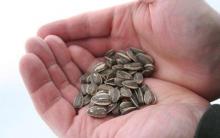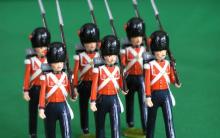3.9k (41 per week)
An integral part Scandinavian mythology is Icelandic mythology, the first being itself a branch of the mythology of the Germanic peoples. IN Icelandic sagas this country seems to be the core of the Scandinavian world. But in subsequent centuries, its mythology was noticeably influenced by Christianity. The main source of knowledge about Icelandic mythology is the prose and poetic Edda.
First comes "Elder Edda", which contains poems dedicated to the gods and heroes of time immemorial. Heroic and mythological songs are presented here. In 1643, the "Royal Codex" was found - the only list of these songs. Eddic poetry is characterized by anonymity- no one knows the authors, she has quite simple form, and the content may concern not only gods and legendary heroes, but also the rules of worldly wisdom. Eddic songs are full of events and actions. Each song tells about one episode from the life of a hero or god, and is composed extremely succinctly. Conventionally, the Elder Edda is divided into 2 parts: songs about the gods concern the mythological side of the past, and the second part is dedicated to heroes. Best known in the Elder Edda song "Divination of the Völva", which describes the old world from the moment of its creation until the tragic death of the gods, which led to the rebirth of the new world.
“The Younger Edda” can be conditionally called a reference guide, which contains descriptions of the gods and their activities, and there are also some stories about the lives of heroes and gods.
According to historians, the sagas that make up the Poetic Edda acquired their current form between 900 and 1050. Around 1220, the Icelandic skald Snorri Sturluson compiled the Prose Edda. In fact this ancient mythology was re-opened, which was enthusiastically received by everyone Germanic peoples. The Eddas have become an invaluable asset to all mankind.
The gods in Scandinavian mythology are divided into two categories: the younger are represented by the “Vanir”, responsible for fertility, and the elder are the “Aces” associated with military affairs.
 There is a point of view that the Aesir were the gods of the warlike Vikings, and the Vanirs were more revered by their sedentary relatives. The Aesir lived in Asgard - the heavenly land of the gods, the supreme among whom was Odin. In addition to Odin, there were a dozen more gods in the pantheon: Thor, Tyr, Balder, Bragi, Heimdall, Vidar, Höd, Vali, Loki, Freyr, Njord, Ull. The Vanirs were at odds with the Aesir for some time.
There is a point of view that the Aesir were the gods of the warlike Vikings, and the Vanirs were more revered by their sedentary relatives. The Aesir lived in Asgard - the heavenly land of the gods, the supreme among whom was Odin. In addition to Odin, there were a dozen more gods in the pantheon: Thor, Tyr, Balder, Bragi, Heimdall, Vidar, Höd, Vali, Loki, Freyr, Njord, Ull. The Vanirs were at odds with the Aesir for some time.
- There were also female goddesses in the pantheon:
- Odin's wife Frigga, who is in charge of destinies;
- goddess of love Freya;
- keeper of rejuvenating golden apples Idun;
- the wife of the thunderer Thor, the golden-haired Sif (possibly associated with fertility);
there were other goddesses. Odin and his retinue were served by Valkyrie maidens in the heavenly palace of Valhalla
, who decided the fate of warriors during battles and chose heroes worthy of Valhalla. This palace of Odin, located in Asgard, had a colossal banquet hall. In addition to the ancient gods, Icelanders believed, and many continue to believe, in the existence of elves, trolls and gnomes , and these mythical characters are somewhat different from those who “live” in other parts of Scandinavia. So, the Norwegians have small trolls, but the Icelanders have giants living in the mountains. Dwarves, as they should be, live among the rocks and underground. In Iceland the latter are called "Huldufoulk", that is, "» underground inhabitants , whose world is as if mirror image
ours, but in other respects they are similar to us. Icelanders deeply believe in everything supernatural, so numerous Icelandic fairy tales are full of miracles, and in general they perfectly reflect the depth of ancient Icelandic culture.
Estimate!
Give your rating!
Contrary to popular belief, Iceland has a very small population. Approximately 300-320 thousand. Agree, this is very little. An interesting fact is that almost everyone there knows each other. Do you know about the famous “six handshakes rule”? So in Iceland, most likely, the rule of three or even two handshakes applies.
Another very unusual fact is that there are no surnames in Iceland. Instead, local residents have analogues of patronymic names. The ending “dottir” (if a daughter) or “son” (if a son) is added to the name of the child’s father. This is how the so-called patronymic is obtained.
Many people think that Iceland is very cold in winter, but this is not at all true, because the air temperature here rarely drops below -6 degrees.
Some Icelandic habits are surprising. For example, spitting on the streets is not a sign of bad manners among them, so everyone spits there, including girls.
Icelanders are very tolerant and polite to visitors. If you didn't like it local residents, they will never show you this. But on the contrary, they will always demonstrate their good disposition towards you by constantly touching you, as if by chance.
Also, the tolerance of Icelanders is manifested in their attitude towards non-traditional people sexual orientation. Same-sex marriage was legal not long ago. Gay pride parades are held annually. And the percentage of bisexuals itself is quite high.
This will seem surprising and strange to many tourists, but everyone here drinks water from the tap. Even in restaurants they will pour you regular tap water. In fact, there is nothing unusual here, because the water comes from the local famous thermal springs, and therefore the water is absolutely drinkable.
As you know, Icelanders eat mainly fish, so in any restaurant you will find a choice of huge amount fish dishes. However, Icelanders have a strange habit of using various sauces, mayonnaise and ketchup in excess. They fill the dish with sauces so much that you may not even feel the taste of the dish itself, so warn the waiter in advance about your taste preferences.
Post navigation
The Ghost of Snaefell
Icelandic legend
In ancient times there lived in Snaefedl a pastor named Ioun, who was nicknamed the Steadfast. He was the son of Thorleif. Pastor John was a wise man, and in those days this was a great blessing for many. He was married twice, his first wife’s name was Sesselya, she bore the pastor three children, one of them lived with his father, and his name was also Jon. The pastor had no children from his second wife.
It so happened that Jon, the pastor's son, fell in love with their maid. The pastor's shepherd also fell in love with her. As often happens in similar cases, Jon and the shepherd were at enmity with each other. One day at the beginning of winter, a shepherd went to the mountains to drive his sheep home, but at that time black ice began, and he returned home without a flock. The pastor decided that the shepherd was simply chickening out and began sending his son Jonah to fetch the sheep. Jon didn't want to go to the mountains.
“It’s obvious you really can’t get through there,” he told his father.
But the pastor did not want to listen to anything, and Jon had to obey. He did not return from this campaign; he died somewhere in the mountains, and it is not even known whether his body was found or not. It is unlikely that his ashes rested in peace in the cemetery, because this dead man began to visit both the maid and the shepherd. The ghost soon became famous for its viciousness; most often it lived on the slopes of Snaefedl and pestered travelers by throwing stones at them. In the parsonage, it broke glass, killed sheep, and sometimes sat with women spinning wool in the common room, and in the evening they always set food for it, like the rest of the household.
One day the pastor's worker heard someone skinning his dried fish. He looked closer and saw a ghost.
“Take the knife, buddy,” the worker said.
“Dead people have no use for knives,” answered the ghost.
It never touched the one who shared food with him or threw stones at him.
One winter in those parts it happened that the supply of tobacco in all the houses came to an end at once. Pastor John came up with a way to help this problem. He learned that tobacco had been brought to the North, to Akureyri, and sent a ghost after it, and he generously provided him with food for the journey. They say that in the North one man saw a ghost sitting on a stone and wanting to eat; tobacco lay on the ground at his feet. He says:
– a kind person, whoever you are, give me some tobacco!
The ghost looked at him with anger, grabbed an armful of tobacco and disappeared, but tobacco crumbs remained on the stone where it was sitting.
After this incident, Pastor Jon decided to send the ghost to the East to Skorrastadir, to Pastor Einar. They say that Pastor Einar was a school friend of Pastor Joun and only with him did Pastor Joun share his worries and confide his troubles to him. The ghost appeared in Skorrastadir and appeared before Pastor Einar when he was already lying in bed.
- Do you want to spend the night here? – the pastor asked when he saw the guest.
“Yes,” answered the ghost. The guest seemed suspicious to the pastor. Suddenly he rushed at the pastor, but he managed to grab a board from the bed and hit the guest so hard that he injured his hand. At this point the ghost had to reveal himself to the pastor and give him the letter.
The pastor told him to get out, but the guest asked to be given some errand. Then the pastor pretended to approve of such a desire, and ordered him to return home, meet Pastor John at the cemetery gates at the end of the service and give him a letter from him. The ghost didn’t want to return home, but he had to obey. It met Pastor Youn at the gates of the cemetery and handed him a letter, and in that letter were written spells against ghosts. Pastor John immediately began to conjure the ghost so that it would leave both people and cattle alone and disappear into underground kingdom. The spell was so powerful that the ghost immediately disappeared underground and, they say, from that time on never harmed anyone.
They also say that one old woman, I think it was Gudni from Arnarfjord, was jealous of the wisdom of Pastor Einar and decided to compete with him. The sorcerer Leif advised the old woman not to joke with the pastor, but she neglected the good advice. And so, they say, one evening in Skorrastadir there was a knock on the door. Pastor Einar told his daughter to see who came. She went to the door, but there was no one there. Then they knocked a second time and a third time, the pastor’s daughter came out to answer each knock, but never saw anyone. The fourth time she walked out the door and found a man around the corner of the house, he said that he needed to see the pastor. She invited him into the house, but the pastor warned her not to go ahead of the guest, so she let him in first. The room was light, Pastor Einar was sitting at the table and writing.
- What business did you come for? – he asked the guest.
-Strangle the pastor from Skorrastadir! – the guest barely said, because he began to lose strength at one glance at Pastor Einar.
The pastor put the guest to bed in the attic and drove the evil spirit out of him. And the next day, the old woman Gudni died in Arnarfjord, because the pastor sent to her the same spirit that she had sent to him the day before.
Makeup and water spirit
Icelandic legend
Grim was the same man who gave his name to Grimsey, an island lying north of Iceland. One day he went fishing with his servants and his little son Thorir. The boy felt cold and was stuffed up to his shoulders in a sealskin bag. Suddenly a water spirit was caught on the hook. His face is human, but his body is that of a seal.
“Either you predict the future for us,” said Grim, “or you will never see your home again.”
“First of all, take me off the hook,” the water spirit asked, and when the people complied with his request, he dived into the water and surfaced away from the boat.
– For you and your servants, my prediction has no meaning! - he shouted. “Your time is running out, Grim, and before spring we will meet you again.” But a different future awaits the boy in the sealskin bag. Let him leave Grimsay and settle where your mare Skalm lies under her pack.
In winter, Grim and his servants again went to fishing, this time without the boy. Suddenly the sea became agitated, although there was no trace of wind, and they all drowned, as the water spirit had predicted.
Thorir's mother set off with him to the south. All summer the mare Skalm walked under a pack and never lay down. But when they reached the two red dunes north of Borgarfjord, the mare suddenly lay down, and the Grim family settled on the lands near the Cold River, between the hill and the sea.
Many years later. Thorir grew old and blind. But one summer evening he stepped out onto the threshold of his house and suddenly received his sight. And having regained his sight, he saw a monster of enormous stature, who was sailing in a boat along the Cold River. Swimming up to the hill, the stranger disappeared into a crevice. And that same night, fire burst out from under the ground, and lava flooded the surrounding area and still covers it to this day. Thorir died that night from the eruption of the volcano that bears his name. They say that Grim comes out of the sea and visits his son, and that if in calm weather you put your ear to the ground, you can hear their voices and the snoring of the mare Skalm, who drinks water from a stone log behind them.
Skessa Krauka
Icelandic legend
In ancient times, on Mount Blaufjall there lived a Skessa named Krauka. Traces of her cave are visible to this day, but this cave is located so high that people never go up there. Krauka caused a lot of harm to the people of Myvatnsveit, she attacked livestock, stole sheep and even killed people.
They said about her that she was not indifferent to men and was very burdened by her lonely life. It happened that Krauka kidnapped men from the village and kept them with her, but none of them liked her, and they tried to run away from her and would rather die than respond to her advances.
One day Krauka kidnapped a shepherd from the Baldursheim farm, his name was Jon. She dragged Krauk Youn to her cave and let him treat him with all sorts of food, but he just turned up his nose. She tried this way and that to please him, but it was all in vain. Finally, the shepherd said that he would not mind eating a twelve-year-old shark. She enchanted Krauk, found out that such a shark existed only in Siglunes, and decided to get this delicacy for the shepherd at all costs. She left him alone in the cave, and she set off on her own journey. She walked a little, and suddenly she wanted to check if the shepherd had run away. Krauka returned home and found the shepherd where she had left her. She hit the road again. She walked and walked and began to doubt again: what if the shepherd ran away. She returned to the cave and saw the shepherd sitting where he was sitting. For the third time, Krauka set off on her journey and no longer doubted anything. Nothing is said about her trip, except that she got some shark meat and ran home the same way.
And the shepherd waited for Krauka to move away, jumped up and ran away. She saw Krauk that there was no trace of him, and set off in pursuit. A shepherd is running, and behind him the stones are rattling - Krauka is about to catch up with him.
- Wait, Jon! - she shouts. - Here's some shark meat for you! It lay in the ground for twelve years and another winter!
The shepherd does not respond, he runs as fast as he can. He ran to the farm, and his owner was working in the forge at that time. Joun ran into the forge and hid behind the owner, and Krauka was already there. The owner grabbed a hot iron from the forge and ordered Krauka to get away and never touch his people again. There was nothing to do, Krauke had to go home. But whether she attacked the owner of Baldursheim after that, we know nothing.
Scott from River Farm
Icelandic legend
One bond's name was Ioun; he lived on Rechnoye Khutor, he had a daughter, Gudbjorg. As he lay on his deathbed, he gave his daughter a sheep bone that had plugs in it, and told her not to remove the plugs, otherwise she would be in trouble.
Then the old man died, and his daughter Gudbjorg married a man named Eirik, and they moved to live on River Farm after Jon.
In those days, on the Summer of the Flint River there lived a bond whose name was Sigurd. His land was barren, and he wanted to fence off the land of River Farm for himself. The couple from River Farm wanted to drive Sigurd away, but failed.
Then it occurred to Gudbjorg that now was the time to open the bone. So she pulled out the plugs and thick smoke came out. He pulled himself together and turned into a woman, if you can call it a woman.
Gudbjorg ordered her to go immediately and drive Sigurd away from Summer Flint River. The ghost immediately went and treated Sigurd so badly that he had to go to sleep in another farmstead, because, according to him, there was no peace to sleep at home because of the demons tormenting him.
The following spring, Sigurd left his site because of this misfortune. As soon as Scott completed her assignment, she returned home to Gudbjorg and asked where she should go now. But Gudbjorg was confused, and then Scotta began to torture her, and in the end she went crazy. Madness was common in her family, and one of her close relatives cut her veins.
Scott from Mosquito Lake
Icelandic legend
Near Mosquito Lake, on Eagle Lake, there lived two bonds who were sorcerers. There were bad rumors about these bonds.
One winter it happened that a poor girl died on the heath during a blizzard, west of Stone Ford, and one of the above-mentioned bonds found out what had happened, went west to the heath at night and revived this girl before she grew cold. Then in the morning he returned home with her, told her to go into the hut in front of him and told her to kill her partner.
Then she went inside, and he later followed her, but as soon as she went there, the bond suddenly sat up in bed and ordered her to attack the one who was following her, and she did so. She grabbed him and threw him across the room like a ball, while the other one sat in bed and laughed. However, he told her not to kill him, and so then she wandered around and for a long time persecuted this family. For example, when Illugi Helgason wrote poems about Ambales, she disturbed him for hours, so that he could not compose during this time.
For a long time she pursued a certain Arntor, who lived in the Valley of Smoke, and when he died, she appeared on the wall of the corral next to the woman who was milking the cows and said:
– Where to go now, now that Arntor is dead?
Then the woman said:
- Go to hell and pursue that family!
Later she wandered around and chased various people. Later a short time curiosity overcame fear, so I decided to peek from under the blanket. The moon was shining brightly again, and now I saw the girl much better than before. She was undoubtedly closer to the bed than before. I watched her for some time. But suddenly she began to frown at me, and it was so terrible that it will forever remain in my memory.
In the end, I managed to wake up my grandmother and tell her that I couldn’t sleep because there was a girl standing opposite the bed by the bench. Grandma said I must have dreamed this nonsense, because as far as I can see now, there is nothing there. And it was true, now no one was visible there. I described this girl’s clothes and herself to my grandmother as clearly as I could, because I was offended that she did not believe me.
She said we should repeat our prayers and then I might be able to sleep. We did it. Then I moved behind my grandmother in bed and soon fell asleep.
In the morning, when I woke up, it was already late. The first thing I saw as soon as I opened my eyes was a stranger sitting on the bench directly opposite me.
Later, when I was walking nearby, I accidentally overheard a conversation between my mother and grandmother. My grandmother told me about what happened to me at night. Then I heard my mother say:
- Well, what can you do! It seems she just wanted to frolic in front of him.
I learned that it must have been Scotta, moreover, I later heard that she was stalking a visitor and his family.











Consequences of tubal ligation during caesarean section
The benefits of sunflower seeds for the heart, hair and nerves
Why do my legs give way at the knees?
Name energy: how the patronymic influences fate and the birth program Name patronymic meaning character
First Chinese Emperor